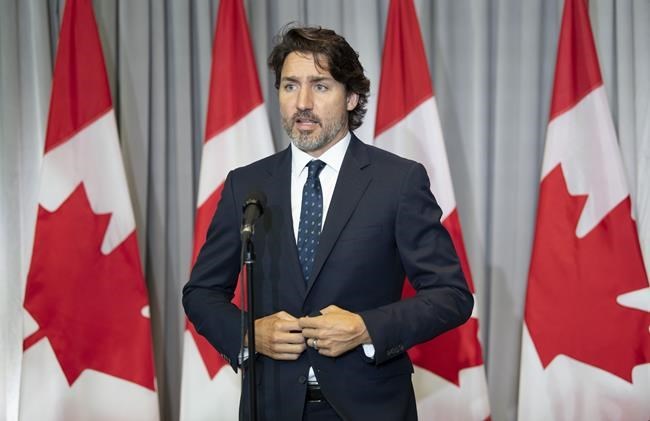OTTAWA — Prime Minister Justin Trudeau and his ministers will hole up for a second day to plot the country's path through — and eventually beyond — the COVID-19 pandemic.
Talk of setting a bold new post-pandemic course for Canada at the cabinet retreat gave way Monday to grim warnings that the pandemic is far from over and that the country could be in for a second deadly wave this fall.
The retreat is being held in Ottawa as positive cases of COVID-19 are on the rise across the country after a bit of a lull over the summer.
Ministers are supposed to focus in part on the throne speech scheduled for Sept. 23.
When Trudeau announced last month that he was proroguing Parliament, he said it would return with a throne speech that would set out a bold new agenda to rebuild a healthier, safer, fairer, greener, more inclusive, more competitive economy.
But as he went into the opening day of the retreat Monday, a less ebullient Trudeau warned that the country first needs to get through the pandemic in order to talk about "next steps."
During the first day, Health Minister Patty Hajdu said ministers discussed various scenarios for how the pandemic might play out this autumn and how they need to be prepared for the worst.
"One (scenario) would be a slow burn where you see these little bumps and peaks and valleys and we work really hard to put out those outbreaks. But the other scenario could be a very severe fall surge and what we need to be is prepared for either of those potential outcomes," she said.
"There is always the possibility that the numbers could grow exponentially ... This is a sneaky virus. It can easily infiltrate communities, households and we have to take it seriously, we cannot let up."
The throne speech itself is expected to focus more on getting through the pandemic than how to rebuild after it's over.
It is expected to include three main priorities: the measures needed to protect Canadians' health and avoid another national lockdown; the economic supports needed to help keep Canadians financially afloat while the pandemic continues; and longer-term measures to eventually rebuild the economy.
In particular, it is expected to promise more funding for health care, including long-term care homes, which have borne the brunt of the more than 9,000 deaths from COVID-19 in Canada. It is also expected to promise money for child care so that parents — especially women, hardest hit by the shutdown — can go back to work.
Details on the longer-term recovery measures won't be revealed until an economic statement later in the fall.
Emergency aid to help Canadians weather the pandemic has already pushed the federal deficit for this year up to an unheard-of $343 billion. With the government operating on the assumption that the pandemic will continue to plague the globe for at least two more years, unprecedented amounts of red ink seem destined to continue flowing.
Treasury Board President Jean-Yves Duclos argued Monday that the government has no choice.
"We need to keep investing in Canadians to avoid moving from a recession to a depression," he said.
Duclos described the strategy as akin to taking care of a cold so that it doesn't evolve into pneumonia.
This report by The Canadian Press was first published Sept. 15, 2020.
Joan Bryden, The Canadian Press



